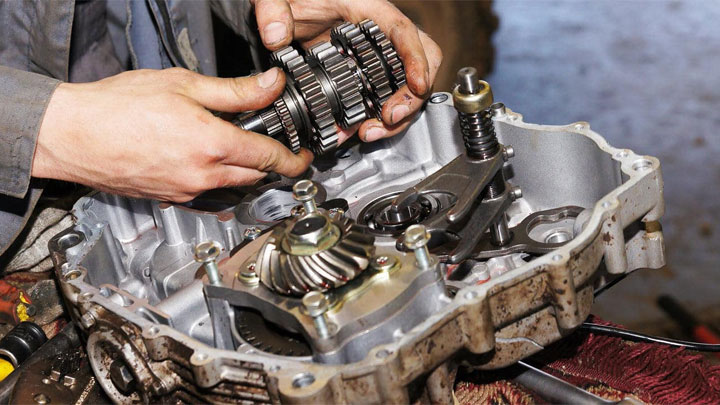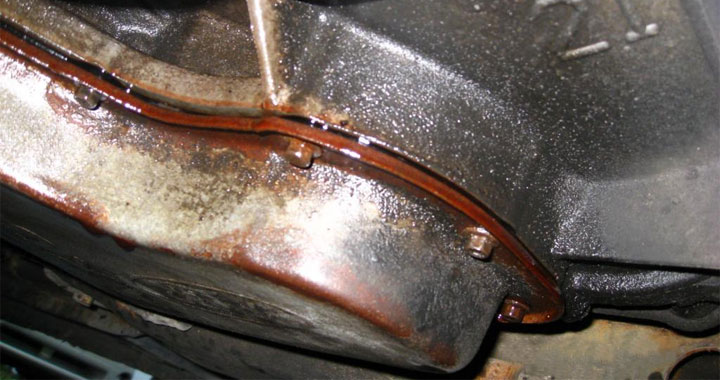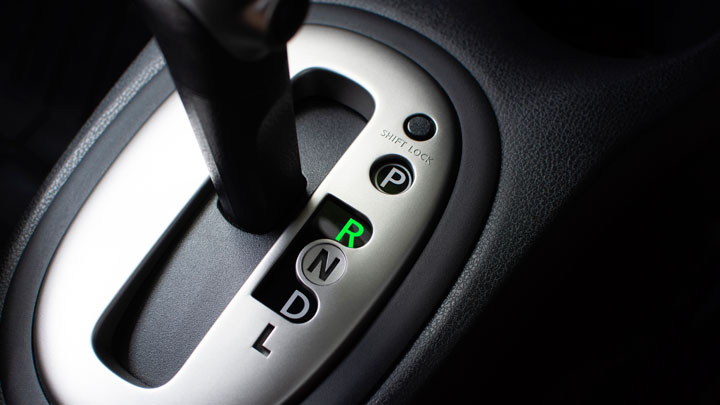3 Symptoms of Burnt Transmission Fluid (and the Cause)
As soon as a car owner or driver notices a burning smell from the engine area, it becomes an issue serious enough that the car should be stopped driving.
Even though transmission problems often occur in specific cars rather than in other makes and models, as long as you have driven your car long enough, transmission repair will eventually come up and can escalate all the way towards a blown transmission.
This often presents itself in the form of burnt transmission fluid. But how do you know if your transmission fluid is burnt and what’s causing it to be like that? Here are some common symptoms to look for along with the reason why your transmission fluid is burnt.

Why Your Transmission Fluid Smells Burnt
Overheating is the main reason behind the smell. Transmission fluid performs two main functions: keeping the moving parts of the transmission well lubricated and causing a cooling effect to help in preventing the entire unit from burning up.
If not enough transmission fluid is in the system, overheating (exceeding normal transmission operating temperatures) and burning up of your transmission can eventually occur. Often, a clogged transmission filter is to blame.
While the smell of burnt fluid doesn’t always mean serious damage has already occurred, you’ll want to refill your automatic transmission fluid asap. But don’t add too much!
Even if the burning smell of the transmission means the car needs servicing, you should ensure a professional mechanic helps you identify if it needs replacement or repair depending on the period you have driven the car and the extent of the damage.

Luckily, almost all cars have the ability to indicate when their transmission has started to fail. Immediately upon noticing such symptoms, you should highly consider taking the vehicle in for diagnostics with a professional automotive tech. Such a decision can save you from having to rebuild the entire system.
Top 3 Burnt Transmission Fluid Symptoms
Without ignoring the likelihood of burnt automatic transmission fluid, the following key symptoms stand out as some of the warning signs that the vehicle needs transmission repair.
#1 – Burning Odor

As soon as you sense the smell of burnt transmission fluid coming from the interior of your vehicle, even without looking at it, that means the transmission fluid is low or needs replacement.
Similarly, when the gears overheat because of too much friction, you will smell some burning odor. Learning how to do a burnout? Expect it to take a toll on your transmission fluid as well as tires.
With a sign such as an intense burning smell, the transmission fluid is not normal. You will likely need the transmission examined if the fluid does not have its unique sweet smell and normal bright red color. A sign of dark and smoky fluid is abnormal.
Related: How Often to Change Transmission Fluid
#2 – Leakage of Transmission Fluid

Any leaks resembling transmission fluid stand out as one of the simple ways of identifying problems with transmission. Having problems such as difficulty shifting gears, indicate that your gears have dried up due some leakage.
Different from the motor oil of your car, the transmission has no capacity of burning up or consuming any fluids in the course of its use. Hence, running out of fluid means that there is a leak somewhere and the entire system overheats due to increased friction.
#3 – Gear Shifting Problems

The integral parts of the transmission of your car are the gears, whether they’re straight cut or helical. Most types of anomalies while shifting gears point towards the sign that the transmission needs attention.
When you try shifting the car into Drive and you notice some hesitation as well as the constant shifting of gears while driving, it may indicate that your car needs transmission repair. A transmission related DTC such as P0711 or P0730 may pop up when scanned with an OBD2 scanner.
Sometimes the gear may slip out when you are driving or jerks constantly when you try to shift gears. Any of the above symptoms should indicate that the car needs the services of a transmission professional.
Related:
Conclusion
Solving transmission problems, such as transmission fluid leaks and changing low, burnt or ineffective fluid is not complex.
However, you need the services of a professional automatic transmission professional to service your car. He can successfully check and change the fluid as well as fix any leaks on the transmission without causing any future problems.
- Replace the Engine or Replace the Car? (11 Factors to Consider) - Apr 11, 2024
- Plastic Piece Dragging Under Your Car? (What It Is and What To Do) - Mar 21, 2024
- Timing Belt vs Timing Chain (What’s the Difference?) - Feb 27, 2024

have new to me 2011 kangoo adapted automatic, has burning smell getting worse past few months, seen 4 mechanics, all say gear box as oil brown and burnt heavy contamination with metal particle[looked gittery]but specialist say over phone that its normal to be brown for these cars with some metal – just needs oil change or wouldnt work-others says needs new gear box. Works ok , some gear slippage-question is that the specialist is 60 m motorway drive away and cant do actual work for few months, so would mean driving it there initially just for diagnostics then back for actual work in few months-do you think it is safe to drive it there and back for diagnostics? He say it will be fine but he doesnt realise how bad the smell is- Ive been driving it a little just locally[uk style local..] I cant afford to not have it as rely on it as disabled and hoping to ‘stretch’ out keeping it going for the few months until he can do work..?Hope this makes sense! any advice welcome
I have no idea if it’s safe; I don’t feel like I have enough information. If the burning smell is getting worse I would probably not take a long trip with it.
Hi I have a 350z with an automatic transmission, I’ve noticed the gears haven’t been that quick and a very very slight burn smell when driving. this has been since a little accident I had, the coolant and other lines were cut off in the accident, should I try putting some transmission fluid and see how it goes?
Check your transmission fluid level first. If it looks low, then I would go ahead and add some ATF.
We have a 2005 ford e250 cargo van, ac wasn’t blowing cold so we had mechanic replace ac compressor, dryer, a line (I believe), then on way home it died twice. Took it back up there and he said fan clutch went out. Drove it home again and was fine that day. Next day van goes into limp mode. Take it to mechanic who says he can’t find anything wrong and come get it. Drives fine on way home. NEXT day again, van goes into limp mode AGAIN, tow it to mechanic shop who checks transmission fluid, says smells burnt and says transmission is shot and we need a new transmission. We had none of these issues until ac compressor was changed and i feel like its somehow connected. Any suggestions?
P.S. taking it to a different mechanic Monday
I have a Rover 45 on reg YY03 plate. My automatic gear box has suddenly started to rev up whilst driving. I toped up the transmission fluid but it is still revving up, I am not very good at the mechanical side of the car but need some advice please.
At the moment I can not afford a garage mechanic but really need my car to get back and forth to hospital. Any help would be appreciated.
Many thanks, Harry Gallagher
Hi Harry, does the vehicle accelerate when it revs up? If not, it may be the transmission slipping.
i have a 2014 nissan sentra and it was having some problems shifting out. now it take off slow check engine light came on got the test done and it said transmission fluid pressure sensor/switch B circuit range/ performance. do you thing i can replace the sensor for i have to get a transmission? i heard that i need a new transmission. Any suggentings?
I’m not sure. You can try replacing the sensor if it’s easy to get to. It could also be a bad ground or poor electrical connection. You’ll probably have to do some more testing to know for sure.
So, first it was slight burning rubber type of smell. As it got worse, thin bits of smoke from the under side of the vehicle, gears beging to get increasingly erratic as i drive to the mechanic. Then I feel slight loss in power , so I pull over and shut car off to let it cool a bit , being that I’m now less than a mile from the shop. Then I crack it back up, shift to drive and pull into shop , where it finally loses power to the wheels. Engine runs fine, trans fluid leaked really bad from recent axel replacement. Still shifts into park, drive, reverse and neutral.
Do u think my trans is completely ruined?? Or is a simple fix to the seal and axel plus refill of fluid gonna remedy the issue?
It could be. Sounds like the transmission was starved of fluid after the leak.
I appreciate how the mechanic’s answers (usually Sean) matched the technical level or apparent knowledge of the person asking the question. Is.there a way to ask a follow up question to his response?
I appreciate the compliment, Liane. 🙂 I am actually not a professional mechanic, just a car enthusiast who is handy with a wrench and a computer. You can ask a follow up question by clicking the “Reply” button directly under the comment you want to reply to.
I had a leak in a transmission line which was replaced (also had a flush a fill). It was a mess…lots of leaking fluid. I manged to get to the dealer in the nick of time.
Noticed a burning smell soon after and went back to the dealer to recheck. System seems fine. No new leaks.
Residual fluid burning off? If so, how long can this last? Can an engine clean clear this up?
It could be residual fluid burning off, especially if it leaked onto any hot components like the exhaust. I’m not sure how long it will last, but it could be months. An engine clean should help. Try to clean the hard to reach places, especially anywhere that looks like it was recently wet from oil.
If the burning smell persists after the cleaning, it wouldn’t hurt to bring it back to the mechanic to get it checked out.
Hi I’ve just had my automatic transmission box changed for a second hand one that had done 68000 miles when the transmision specialist received the box he noticed that the old fluid was very dark in colour not pinkish they exchanged the fluid and told me to do about 1000 miles and bring it back and they would change it again they thought that the gearbox had done a lot more miles than ide been told.Any way the gearbox I’ve purchased is just the same as the one I’ve taken out sets off great in 1st and 2nd and sum times 3rd if I get into 4th and I want to pass something It want Change dawn.ime a bit lost with it at the moment.Have you got any suggestions for me I’ve got warranty with the gearbox but I don’t want to send it back as faulty if it’s something els.Hope you can help a bit.
Cheers Gordon Watson
Lots of 4 speed automatic transmissions have an overdrive gear for their top gear. If you’re in 4th and you step on the gas to pass someone, you’ll usually downshift. That part seems normal. If it feels wrong or like the transmission is slipping, I would take it back and use the warranty.
2007 mazda Cx7. When shifting into 2nd gear the vehicle shifts hard, but only that gear. The “AT” light comes on the dash for the automatic transaxle. Pulled my scanner in and the code PO976 appears for Shift Solenoid B control circuit low. Any suggestions on how to fix this?
You may have to replace the shift solenoid. Before you do, check the condition of the transmission fluid. Does it look good, or is it dark and burnt smelling?
If the fluid checks out, the factory service manual should have a procedure for testing the shift solenoid circuit. If the solenoid fails the test, replace the solenoid. The manual will also have the location of the solenoid and the disassembly/reassembly procedure.
2009 subaru forester thinking of buying , everything seems very good , but transmission fluid is brownish and has a slight burnt smell , anyway to know if tranny going bad or just need a flush
Hi Tim, it probably just needs a flush.
4l60e transmission will go into reverse and 1st but has a delay on the other gears. Sometimes it wont even shift but sometimes it will. Tranny fluid is brown also. Truck milage 230k.
Bad transmission fluid can definitely cause problems like this. But it could also be others things such as the valve body.
I JUST HAD MY TRANSMISSION REPLACE AND I SMELL LIKE BURNING OIL
Check your transmission fluid level. If that’s fine, it may just be some fluid that got somewhere on the case or other part and is simply burning off. It should go away on its own. But I’d mention it to whoever did the swap just to document it in case the smell doesn’t go away.
Is it true overaccelerating can cause automatic gearbox to burn? Not comment but question.
Not sure what you mean by overaccelerating. Do you mean too much power is given to the wheels which causes them to lose traction and spin?
If so, it’s possible but not likely. You’re causing additional stress to the torque converter which can cause failure over time though.
If it’s wheel hop (tires lose and gain traction in rapid succession), then yes, it can cause a transmission failure from the repeated stress.
My ford f150 stx 4×4 tranny jus wouldn move i change the fluid drove it but still didn have the power so i put 3 more quarts of tranny fluid in an it moved so now it just stopped i took the tranny out does anyone have any options that could help me?
i bought a 1995 dodge grand caravan and have a transmission issue the guy said it is a seal thats out and im gonna guess he used the same seal it had and didn’t change the seal when he changed the sealinoid B. But that’s it. it runs and drives just fine but don’t know if it’s safe to drive without changing the seal please help me thanks.
my gulf 3 automatic transmission car revs, but did not move.
could be many things , such as low transmission fluid, undone shifter cable, or some more unusual things , like the torque converter ,or even worst of all the transmission is ” slipping” badly , and needs repairs .
99 Toyota Camry le automatic 6 cyl
Check engine light one and scanned with code reader and got code P0500 vehicle speed sensor A
Changed the speed sensor.
Started car back up, drove a couple hundred feet, check engine light came back on and the scanner read the same code.
Only difference now is that the odometer isn’t reading. That’s the only thing on the dash not reading.
You may have a wiring issue that is shorting the speed sensor, or a bad ground that is preventing the speed sensor from reading properly.
What ended up being the issue same happened to my 08 Honda accord EX-L V6 sedan because coolant line to transmission broke ran dry while driving now does that revs but won’t engage into gear.
Drove 30 mins bone dry but I think my transmission should be okay honestly.
That is the question